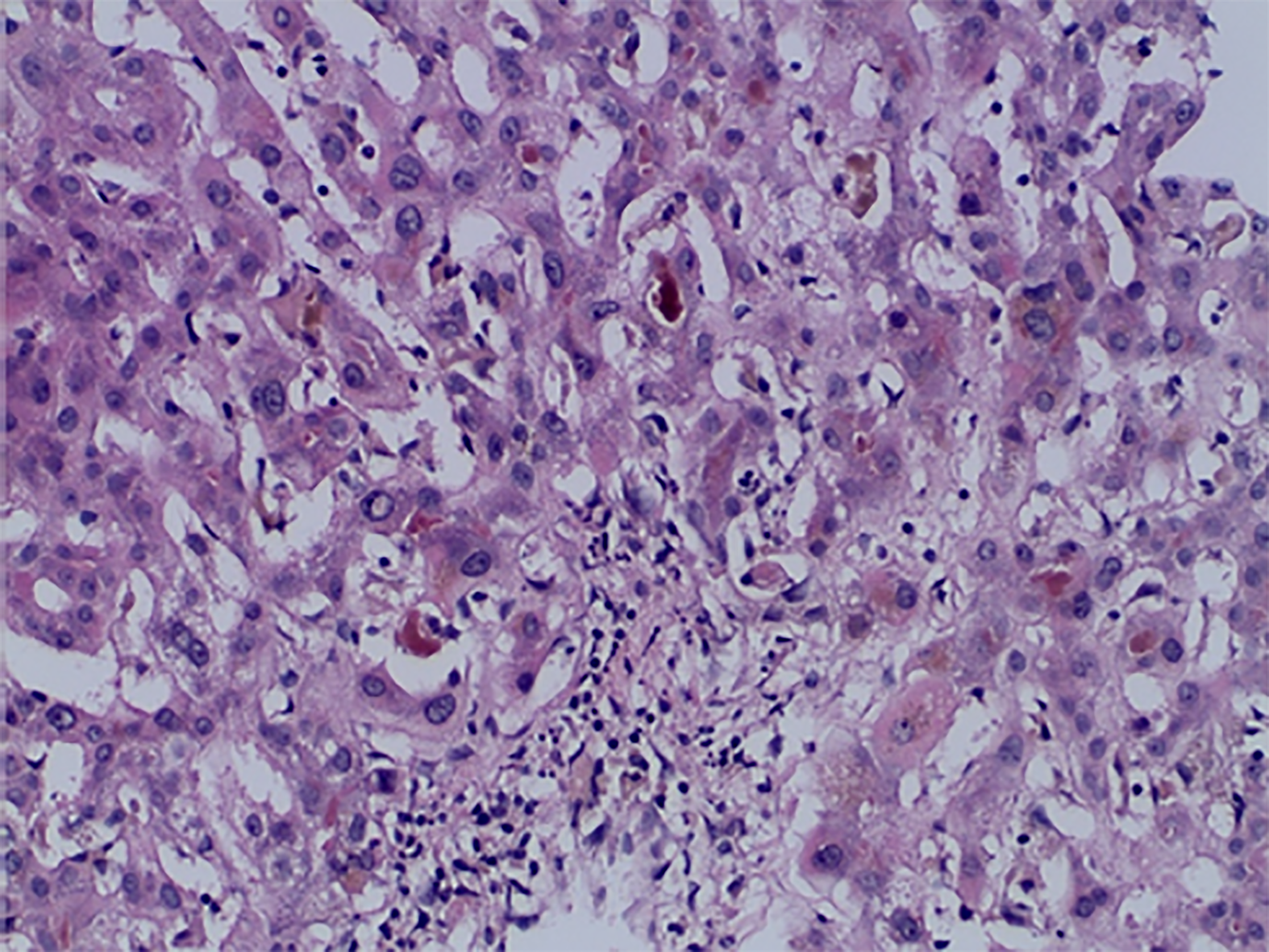Copyright
©The Author(s) 2021.
World J Clin Cases. Jun 6, 2021; 9(16): 4062-4071
Published online Jun 6, 2021. doi: 10.12998/wjcc.v9.i16.4062
Published online Jun 6, 2021. doi: 10.12998/wjcc.v9.i16.4062
Figure 2 The liver biopsy specimen of case 2.
Hematoxylin and eosin-stained histological evidence showing acute cholestasis with mild fibrosis after ligandrol and post-cycle therapy misuse. Hepatocyte architecture is preserved without nodularity with some hepatocyte apoptosis and perivenular hepatocyte necrosis, or patches of swollen hepatocytes with double nuclei. No apparent signs of significant steatosis, Mallory-Denk bodies, or hemosiderin content. Porto-biliary areas have distinct band-like enlargement, with some thin threads of bridging fibrosis together with destruction of bile ducts with anisokaryosis and focally overlapping lines of biliary epithelial cell nuclei with ductular reaction and a mixed inflammatory infiltrate with focal neutrophil content. There is a marked centroacinar canalicular cholestasis with numerous bile-plugs in the canaliculi with abundant phagocytosis by the Kupffer cells (Schmorl reaction). Immunohistochemistry stains: cytokeratin 7+ in the bile ducts, ductules, and robust biliary metaplasia, cytokeratin 8/18+ and factor VIII in endothelial cells, cluster of differentiation 34+ (CD34+) in the periportal capilarized sinusoids, ubiquitin glutamine synthetase + in the centroacinar foci, CD15+ in neutrophils and macrophages, and LCA in the lymphocytes (Dr. Smitka).
- Citation: Koller T, Vrbova P, Meciarova I, Molcan P, Smitka M, Adamcova Selcanova S, Skladany L. Liver injury associated with the use of selective androgen receptor modulators and post-cycle therapy: Two case reports and literature review . World J Clin Cases 2021; 9(16): 4062-4071
- URL: https://www.wjgnet.com/2307-8960/full/v9/i16/4062.htm
- DOI: https://dx.doi.org/10.12998/wjcc.v9.i16.4062









